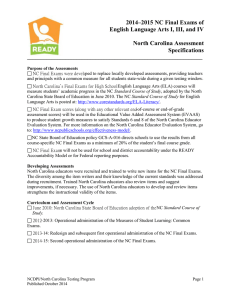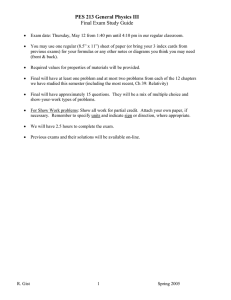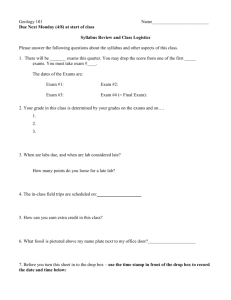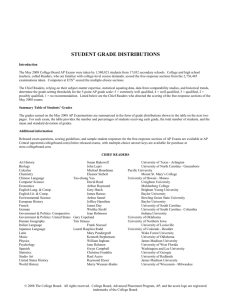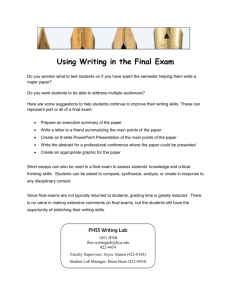Common Core State Standards English Language Arts North Carolina Assessment Specifications
advertisement
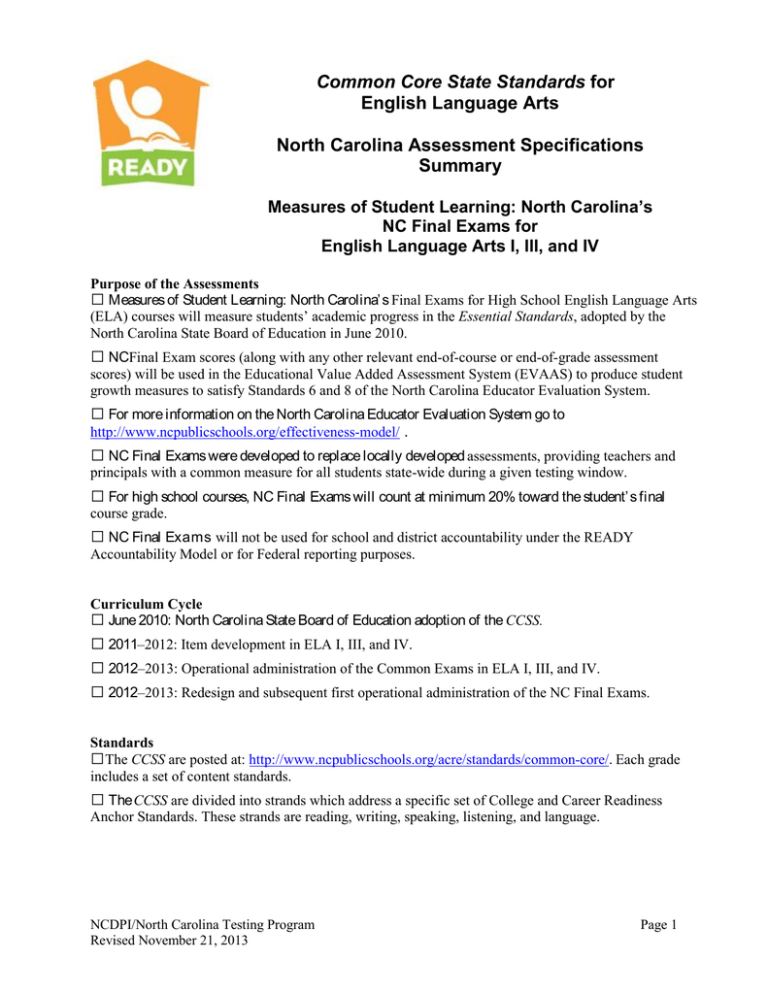
Common Core State Standards for English Language Arts North Carolina Assessment Specifications Summary Measures of Student Learning: North Carolina’s NC Final Exams for English Language Arts I, III, and IV Purpose of the Assessments Measures of Student Learning: North Carolina’ s Final Exams for High School English Language Arts (ELA) courses will measure students’ academic progress in the Essential Standards, adopted by the North Carolina State Board of Education in June 2010. NCFinal Exam scores (along with any other relevant end-of-course or end-of-grade assessment scores) will be used in the Educational Value Added Assessment System (EVAAS) to produce student growth measures to satisfy Standards 6 and 8 of the North Carolina Educator Evaluation System. For more information on the North Carolina Educator Evaluation System go to http://www.ncpublicschools.org/effectiveness-model/ . NC Final Exams were developed to replace locally developed assessments, providing teachers and principals with a common measure for all students state-wide during a given testing window. For high school courses, NC Final Exams will count at minimum 20% toward the student’ s final course grade. NC Final Exams will not be used for school and district accountability under the READY Accountability Model or for Federal reporting purposes. Curriculum Cycle June 2010: North Carolina State Board of Education adoption of the CCSS. 2011–2012: Item development in ELA I, III, and IV. 2012–2013: Operational administration of the Common Exams in ELA I, III, and IV. 2012–2013: Redesign and subsequent first operational administration of the NC Final Exams. Standards The CCSS are posted at: http://www.ncpublicschools.org/acre/standards/common-core/. Each grade includes a set of content standards. The CCSS are divided into strands which address a specific set of College and Career Readiness Anchor Standards. These strands are reading, writing, speaking, listening, and language. NCDPI/North Carolina Testing Program Revised November 21, 2013 Page 1 Prioritization of Standards The North Carolina Department of Public Instruction (NCDPI) invited teachers to collaborate and develop recommendations for a prioritization of the standards indicating the relative importance of each standard, the anticipated instructional time, and the appropriateness of the standard for multiple-choice and constructed response item formats. Subsequently, curriculum and test development staff from the NCDPI met to review the results from the teacher panels and to develop weight distributions across the domains for each grade level. Tables 1 through 3 describe the percentage of test questions that will appear on the NC Final Exams forms in ELA. English Language Arts I and IV will consist of only Multiple-choice (MC) items. English Language Arts III will include constructed response (CR) items. Students will probably take twice as long to answer the constructed response (CR) items. As such, CR items will be worth two points each. Table 1. Test Specification Weights for the NC Final Exams in ELA I Domain Standards Percent of Total Score Points Language L4, L5 15-20% Reading for Information RI1- RI6 35-40% Reading for Literature RL1- RL6 45-50% Table 2. Test Specification Weights for the NC Final Exams in ELA III Domain Language Reading for Information Reading for Literature Standards L4, L5 RI1- RI6 RL1- RL6 Percent of Total Score Points 15-20% 35-40% 40-45% Table 3. Test Specification Weights for the NC Final Exams in ELA IV Domain Language Reading for Information Reading for Literature Standards L4, 5 RI1-6 RL3,5,6 Percent of Total Score Points 15-20% 35-40% 40-45% Cognitive Rigor The multiple-choice test questions will require students to read, comprehend, and recall information. Also, students will be expected to analyze the reading passages; identify points of view, claims, and evidence; apply concepts and skills; and make inferences. NC Final Exams constructed response questions on English III will draw from the following CCSS writing standards: • Standard 1. Write arguments to support claims in an analysis of substantive topics or texts, using valid reasoning and relevant and sufficient evidence. • Standard 4. Produce clear and coherent writing in which the development, organization, and style are appropriate to task, purpose, and audience. NCDPI/North Carolina Testing Program Revised November 21, 2013 Page 2 • Standard 9. Draw evidence from literary or informational texts to support analysis, reflection, and research. Types of Items The NC Final Exams for ELA I, III, and IV will consist of four-response-option multiple-choice (MC) items. ELA III will also contain constructed response (CR) items. Each form will consist of passages drawn from works of literature, which includes short story and poetry, or informational texts, drawn from the domains of History/Social Studies or Science/Technology. In ELA III, two passages will have a constructed response item. The constructed response items will be short answer and can typically be answered well in a paragraph or less. Each constructed response item will target reading skills will also measure specific writing skills. These short answer questions will be worth 2 points each. For ELA I and IV, the total test will contain fifty multiple-choice items. For ELA III, the test contains 48 multiple-choice items and two constructed response items. Testing Structure and Time The total time allocated to the test is 120 minutes unless students have documented accommodations (i.e., Multiple Testing Sessions, Extended Time). Students should monitor the clock to ensure they allow themselves adequate time to respond to all items. Delivery Mode The NC Final Exams are designed for paper/pencil mode only. NCDPI/North Carolina Testing Program Revised November 21, 2013 Page 3

